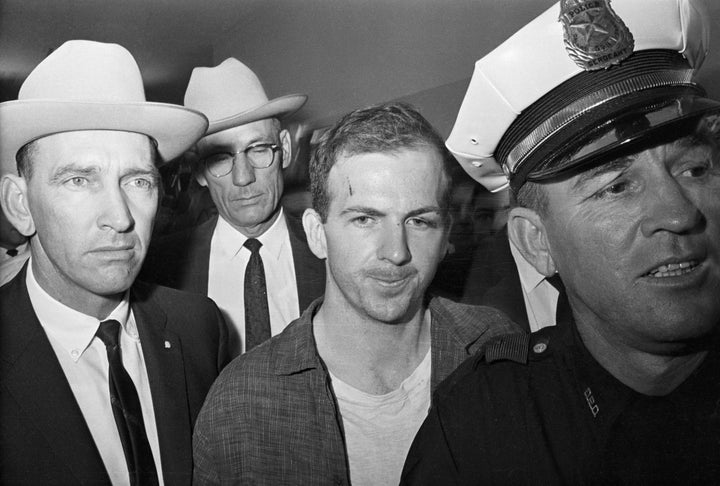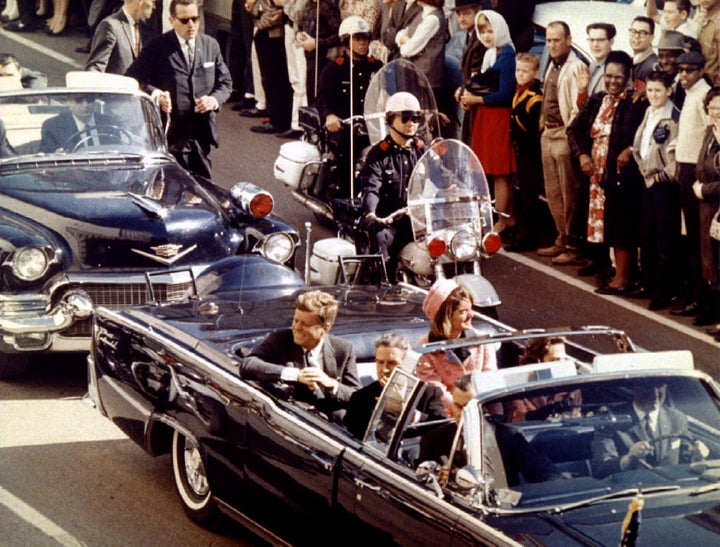JFK Files Don’t Make The Details Of His Assassination Any Less Mysterious
The FBI set off warning bells about Lee Harvey Oswald the month before President John F. Kennedy’s killing.
Tidbits revealed in newly released National Archives documents related to the assassination of President John F. Kennedy suggest the investigation into what happened in Dallas on Nov. 22, 1963, won’t settle lingering questions.
Who Was Lee Harvey Oswald? We Still Don’t Really Know.
Some of the most surprising ― and frustrating ― documents declassified on Thursday revolve around Kennedy’s assassin, Lee Harvey Oswald.
Speculation surrounding Oswald and the CIA has abounded for years. It was previously known, for instance, that he tried to defect to the Soviet Union and asked to renounce his U.S. citizenship.

The trove of documents reveals there was speculation Oswald was a CIA operative. A 1975 presidential Commission on CIA Activities deposition shows that Richard Helms, who had served as CIA director, asked David Belin, an attorney for the commission, whether “the CIA was in some way conspiratorially involved with the assassination of President Kennedy.”
“Is there any information involved with the assassination of President Kennedy which in any way shows that Lee Harvey Oswald was in some way a CIA agent or agent …” Helms inquired.
The rest of the document is cut off.
If the answer was yes, it would stoke even more confusion about a document that says Oswald made contact with Valeriy Vladimirovich Kostikov, an officer from the Soviet KGB, while at Mexico City’s Soviet embassy on Sept. 28, 1963. Oswald called the embassy several days later and asked, in broken Russian, whether there was “anything new concerning the telegram to Washington.”
Soviet officials denied any affiliations with Oswald. They described him as “a neurotic maniac who was disloyal to his own country and everything else.”

As for Oswald’s assassination, FBI Director J. Edgar Hoover said he warned Dallas authorities about a death threat against Oswald, according to a November 1963 memo.
“We at once notified the chief of police and he assured us Oswald would be given sufficient protection,” Hoover said after the Dallas FBI office received a call from a man “saying he was a member of a committee organized to kill Oswald.”
It’s unclear where that protection was when Jack Ruby shot Oswald to death on Nov. 24, 1963, while he was being taken to the county jail.
The documents also contain unsubstantiated tips, including claims of a second shooterand reports of Oswald having prior contact with Ruby.
Was The Assassination A Coup? We Still Don’t Really Know.
Whether there was an agency or group behind the killing is not something the new documents clear up.
Hoover said in the 1963 memo that his concern “is having something issued so we can convince the public that Oswald is the real assassin.”
He didn’t expand on this, so it’s not known whether Hoover believed there were more people involved and didn’t want the public to know, or whether he merely thought he would have a hard time convincing the public that the assassin was a lone wolf.
Soviet leadership assumed the killing was the result of an “ultraright” coup intended to “stop negotiations with the Soviet Union, attack Cuba and thereafter spread the war,” according to a 1966 document detailing Soviet reactions to Kennedy’s death from a source who was in Russia.
“They seemed convinced that the assassination was not the deed of one man, but that it arose out of a carefully planned campaign in which several people played a part,” the file said. Soviet leaders were concerned that an “irresponsible general” in the U.S. would launch a missile at them in response.
Then, in 1978, authorities met with Cuban leader Fidel Castro, who “assured the Committee that neither he nor his government had any involvement in the assassination.” Yet the Cuban ambassador to the U.S. did react with “happy delight” to the news.




1 opmerking:
De verwondingen die de, vermeende, twee schoten hebben aangericht (het eerste schot miste) kunnen onmogelijk, nogmaals: onmogelijk! vanuit de, vermeende, positie van LHO in het Texas Schoolbook Depository zijn veroorzaakt.
Niet voor niets noemt men het tweede schot, dat JFK hoog in de rug raakte, de 'magic bullet'. Dit schot verwondde niet alleen JFK maar ook de gouverneur van Texas Connally, die recht voor JFK zat.
https://www.jfk-assassination.de/media/drawings/magic.php
Vanaf de vijfde verdieping (sixth floor) van het gebouw zou het een zeer stijl schot zijn geweest van rechts achter JFK (Ik heb een paar jaar geleden zelf achter dat raam gestaan). Bij een schot vanuit die positie zou de kogel ergens ter hoogte van JFK's maag zijn lichaam hebben verlaten.
Als een verhaal niet klopt met de beschikbare feiten kun je of het verhaal aanpassen of je kunt de feiten zover verdraaien dat je verhaal weer klopt. Dat laatste doen de 'debunkers' van de JFK complottheorieën.
Op de foto, hierboven in het artikel, is te zien dat Connally praktisch recht voor JFK zit. Het schot van rechtsachter, dat JFK hoog in de rug raakte, kan Connally in deze situatie nooit hebben geraakt. De debuckers nu, zeggen dat Connally niet recht voor JFK zat maar een stuk lager een bijna midden in de auto. Ook het traject van de kogel maken zij een stuk vlakker. Verdraaiing van de feiten dus.
https://www.youtube.com/watch?v=DSBXW1-VGmM
Het fatale schot, dat JFK in het hoofd raakt, komt duidelijk van rechtsvoor, de zapruder-film laat dat overtuigend zien.
Kortom: wat LHO's rol ook mag zijn geweest, hij is niet de moordenaar van JFK.
Wel interessant in deze is het verhaal van Judyth Vary Baker:
https://www.groene.nl/artikel/een-amerikaanse-held
Als het LHO gegund was een normaal proces te krijgen zou de geschiedenis van deze moord er heel anders uit hebben gezien.
Een reactie posten